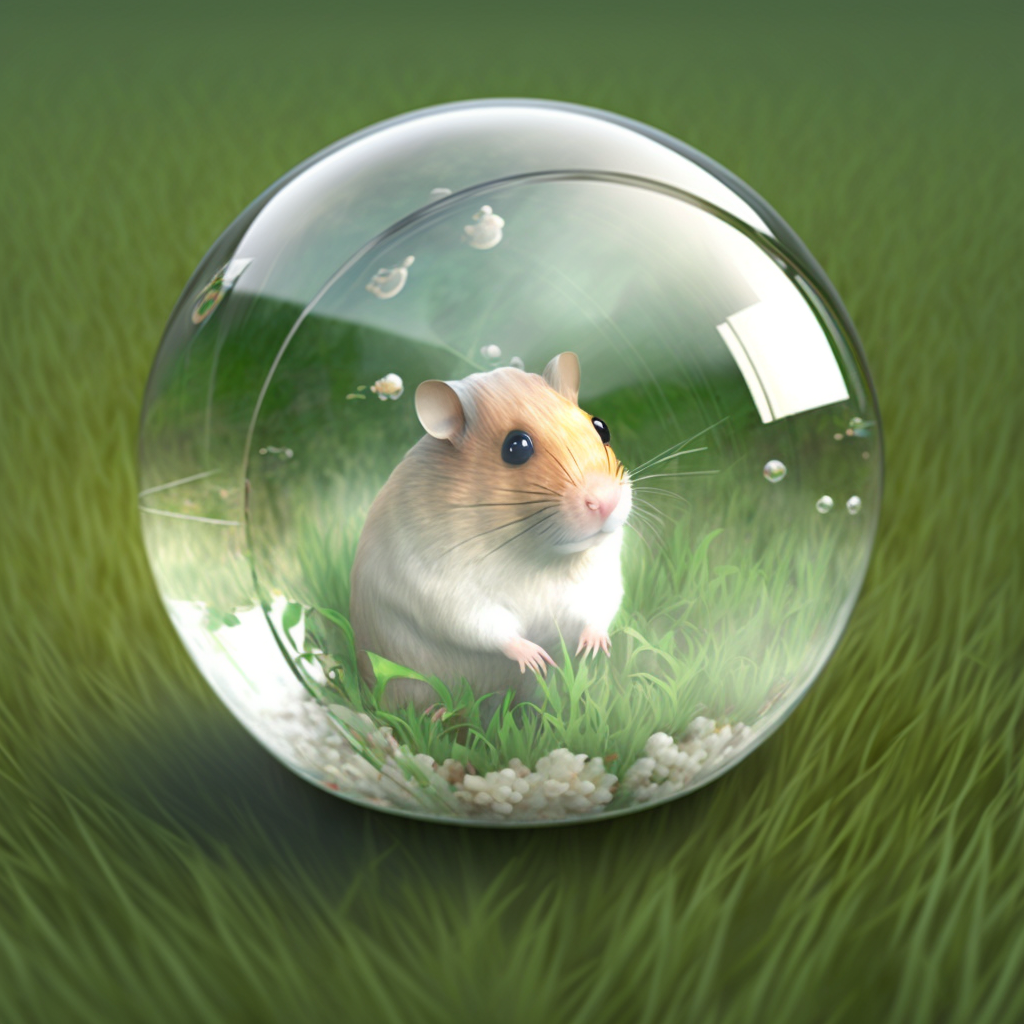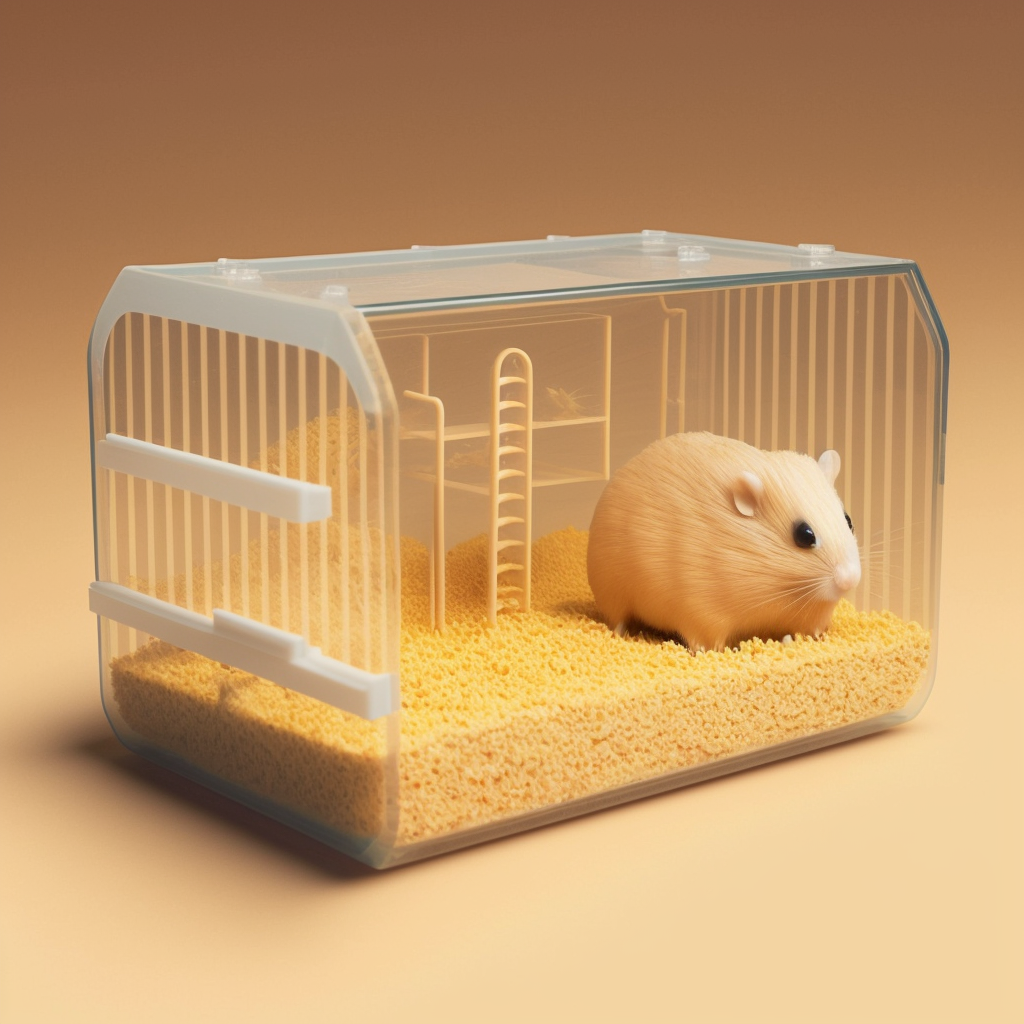Hamsters are one of the most popular pets worldwide. They are cute, cuddly, and easy to take care of, making them perfect for both children and adults. As a hamster owner, your top priority should be providing your furry friend with a comfortable and safe environment to live in. A hamster’s cage is their home, so it’s important to ensure that it is equipped with all the necessary items to keep them happy and healthy. In this article, we will provide you with a list of the top 10 essential items for a hamster’s cage.
Table of Contents
10 Essential Items for a Hamster’s Cage
- Cage Size and Style
The first and foremost important thing to consider when choosing a hamster cage is its size and style. The ideal cage size for a hamster is at least 450 square inches of floor space. A hamster’s cage should also have proper ventilation and be made of safe, chew-proof materials. Wire cages are a popular choice, but it’s essential to ensure that the spacing between the wires is small enough to prevent your hamster from escaping.
Click here for our review of a popular hamster cage called the Arcade Hamster Home.
- Bedding
Hamsters love to burrow, so bedding is an essential item for their cage. The bedding should be safe, absorbent, and provide insulation. Avoid using cedar or pine bedding as it can cause respiratory problems for your hamster. Instead, opt for bedding made from aspen shavings, paper, or coconut fibers.
- Food Bowl
A food bowl is a must-have item for a hamster’s cage. It should be heavy enough to prevent tipping over and made of non-toxic materials. Ceramic or glass bowls are ideal as they are easy to clean and do not contain harmful chemicals.
- Water Bottle
A hamster’s cage should always have a water bottle available. Choose a bottle that is the right size for your hamster and made of non-toxic materials. Check the water bottle daily to ensure it’s working correctly and replace the water regularly.
- Hideouts
Hamsters love to have a place to hide and feel safe. You can add hideouts to your hamster’s cage in the form of tunnels, tubes, or igloos. Ensure the hideouts are made of safe materials and are large enough for your hamster to move around in.
- Exercise Wheel
An exercise wheel is a great addition to a hamster’s cage. It provides your hamster with the opportunity to exercise and play, which is essential for their physical and mental well-being. Choose a wheel that is the right size for your hamster and made of safe materials.

- Chew Toys
Hamsters love to chew, and it’s important to provide them with safe chew toys to prevent them from gnawing on their cage or accessories. Wooden chew toys, hay cubes, and mineral chews are all excellent options.
- Litter Box
Hamsters are naturally clean animals, and providing them with a litter box in their cage can help keep their living space clean and odor-free. Choose a litter box that is the right size for your hamster and filled with safe, absorbent litter.
- Exercise Ball
An exercise ball is a great way to give your hamster some time outside of their cage while still keeping them safe. It’s important to supervise your hamster while they are in the exercise ball and ensure they don’t get stuck or injured.
- Cleaning Supplies
Lastly, it’s essential to have cleaning supplies on hand to keep your hamster’s cage clean and odor-free. A pet-safe disinfectant, a small broom, and a dustpan are all useful items to have.
Cleaning and Maintaining Your Hamster’s Cage
Regularly cleaning your hamster’s cage is essential for their health and wellbeing. A dirty cage can cause your hamster to become sick or develop respiratory problems. Here are some steps to follow when cleaning your hamster’s cage:
- Remove your hamster from the cage and place them in a secure location, such as a playpen or exercise ball.
- Remove all the accessories, toys, bedding, and food and water dishes from the cage.
- Dispose of any soiled bedding or food.
- Wash the cage with warm soapy water, and rinse thoroughly with clean water.
- Allow the cage to air dry completely before adding new bedding and accessories.
- Replace the bedding, food, and water dishes, and toys in the cage.
It is recommended to clean your hamster’s cage at least once a week, or more frequently if your hamster is prone to making a mess.
Frequently Asked Questions
Q: How often should I clean my hamster’s cage? A: You should clean your hamster’s cage at least once a week. However, if you notice any signs of odor or excessive waste, it’s best to clean the cage more frequently.
Q: What kind of bedding should I use for my hamster’s cage? A: There are many different types of bedding that can be used for hamster cages, including paper-based bedding, wood shavings, and recycled paper products. However, it’s important to avoid using cedar or pine shavings, as these can be harmful to your hamster’s respiratory system.
Q: Can I keep multiple hamsters in one cage? A: It’s generally not recommended to keep multiple hamsters in one cage, as they can become territorial and fight with each other. Syrian hamsters, in particular, are known to be solitary animals and should always be housed alone.
Q: How much exercise does my hamster need? A: Hamsters are active animals and require plenty of exercise. It’s recommended to provide your hamster with at least one hour of exercise outside of their cage each day, either through free-roaming playtime or in a hamster ball.
Q: What kind of food should I feed my hamster? A: Hamsters require a diet that is high in fiber and protein, and low in fat. You can feed your hamster a commercial hamster food, as well as fresh fruits and vegetables in moderation. It’s important to avoid feeding your hamster sugary or fatty foods, as these can lead to health problems.

